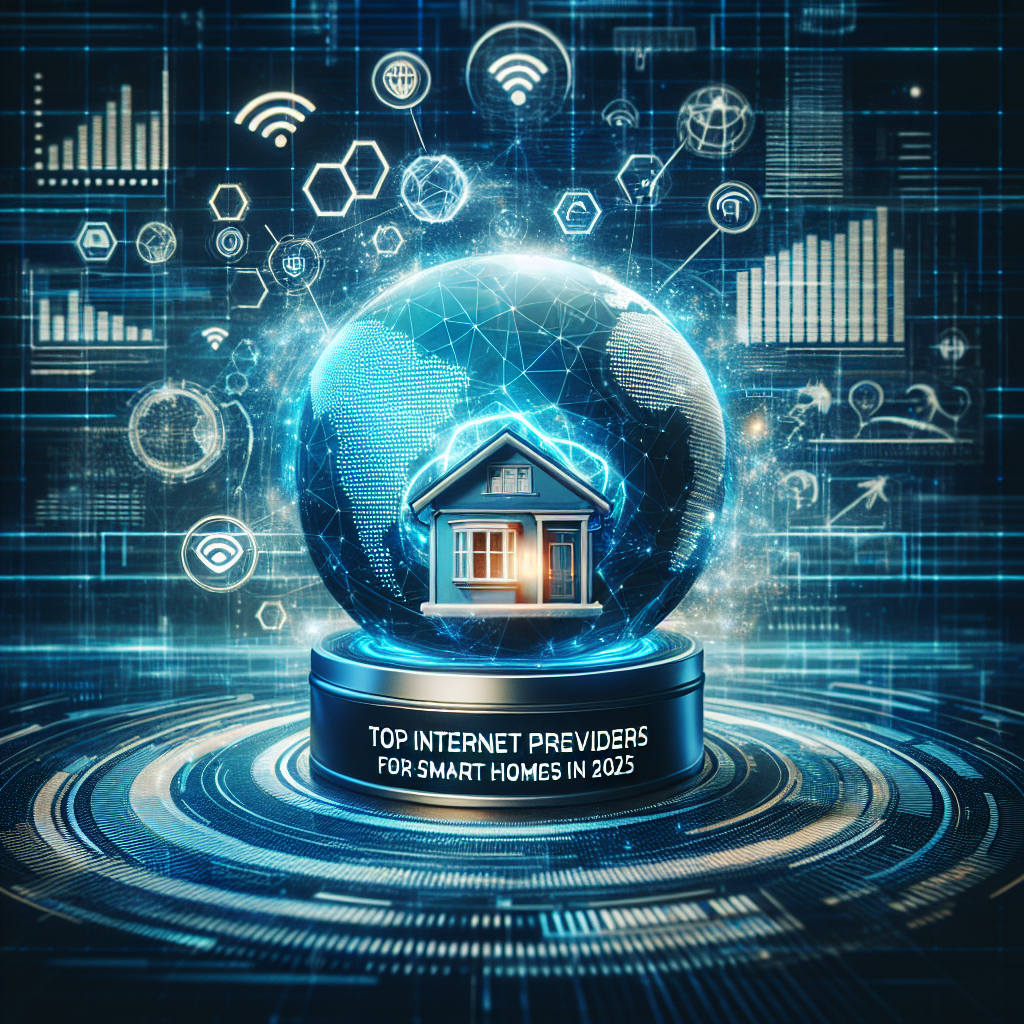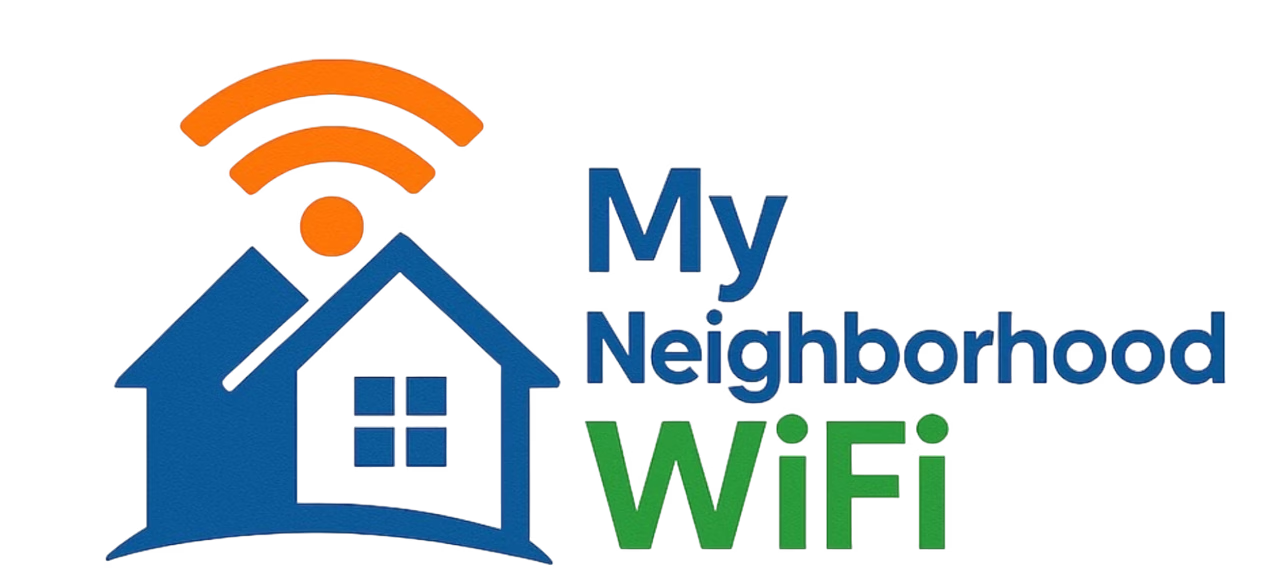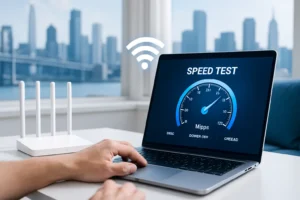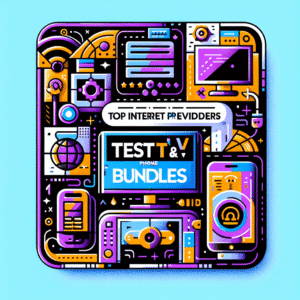
Smart homes in 2025 are more connected than ever before. Between smart thermostats, lighting systems, cameras, and AI-powered assistants, your home’s functionality relies on one key ingredient—fast and reliable internet. Choosing the top internet providers for smart homes in 2025 can feel overwhelming, but with the rise of new technology standards like Wi-Fi 6 and Wi-Fi 7, plus home networking solutions like mesh systems, the right provider can transform your living space into a seamless hub of automation and convenience.
Why Internet Matters So Much for Smart Homes
The primary keyword here is internet providers for smart homes, and that’s because your overall smart home performance hinges on connectivity. If your Wi-Fi lags, your smart devices won’t be so “smart.” Here are just a few reasons why choosing the right internet matters:
- Smart devices like video doorbells and cameras require strong upload speeds to stream without interruptions.
- Voice assistants and AI platforms depend on reliable internet to deliver commands in real time.
- Home automation routines (lights, temperature adjustments, appliances) only work flawlessly when connected 24/7.
- Mesh setups for large homes allow smart devices in every corner to remain responsive without dead zones.
When you think about it, internet isn’t just for streaming movies anymore. It’s the nervous system of your modern home. According to an explanation on Medium, Wi-Fi is simply a way of connecting to the internet—but as we add more devices, we need higher performance routes to ensure everything runs smoothly.
Key Features to Look for in 2025 Internet Providers
Before diving into who is leading the market, let’s break down what makes some providers more “smart home ready” than others.
1. Speed and Reliability
With dozens of devices on your network, speed matters. Look for symmetrical speeds (fast upload and download) so that your cameras, streaming services, and automation devices operate without delay.
2. Low Latency
Latency is the time it takes for a signal to travel. Low latency ensures that when you tell Alexa or Google Assistant to dim the lights, it happens instantly—not two seconds later.
3. Wi-Fi 6 and Wi-Fi 7 Compatibility
Wi-Fi standards continue to evolve. Routers using Wi-Fi 6 and Wi-Fi 7 allow multiple smart devices to connect at once without bogging down performance. As highlighted in NAR’s guide, dual-band and tri-band networks help separate devices for smoother performance, which is essential for a home with multiple smart speakers, cameras, and sensors.
4. Mesh Networking
Large homes often struggle with dead zones where Wi-Fi can’t reach. Mesh systems, like the ones explained, solve this by placing nodes around the house. However, it’s important to note that wireless backhaul connections can halve speeds, making wired connections preferable if possible.
5. Strong Security
Smart homes hold sensitive information—your security cameras, locks, and even energy usage data. Make sure providers support WPA3 encryption and offer secure guest networks. This way, you can keep your IoT devices on a separate SSID from your personal computers and phones.
Top Internet Options for Smart Homes in 2025
Instead of listing only brand names (since many well-known providers are restricted from being mentioned here), let’s break down the types of internet connections available, who they’re best for, and what’s trending in 2025.
| Connection Type | Best Use |
|---|---|
| Fiber Internet | Ideal for households with many connected devices, smart security systems, and remote workers. |
| Cable Internet | Good balance of speed and widespread availability; strong enough for medium-to-large smart homes. |
| Fixed Wireless / 5G | Flexible for rural homes; when paired with modern routers, it powers IoT setups effectively. |
| Satellite Internet (Next-Gen) | Beneficial in remote areas where fiber or cable aren’t available; growing reliability in 2025. |
Routers and Equipment Matter Too
No matter how great your internet provider is, your smart home experience will suffer if your equipment can’t handle the load. Routers are the gatekeepers of your network, and a weak one will bottleneck your speeds. That’s why mesh systems and advanced routers are highly recommended in 2025.
For budget-friendly setups, routers like TP-Link Archer AX55 or AX73 are highly praised. As noted in a Medium review, people have found the AX55 strong enough for multiple devices while being easy to install through an app.
Biggest Challenges for Smart Home Internet in 2025
Even with the right provider, there are common pitfalls .Common internet struggles include hardware limitations, interference from household devices, and router placement. Here’s what smart homeowners need to watch out for:
- Too many devices fighting for bandwidth.
- Old routers that can’t manage smart loads effectively.
- Signal interference from microwaves, cordless phones, and walls.
- Limited upload speeds preventing cameras and security systems from performing well.
Tips for Optimizing Smart Home Internet
Use Dual SSIDs
Separate your IoT devices from your primary devices. This ensures your computers and phones don’t suffer lags when a smart device updates or runs diagnostics.
Place Routers Strategically
Center your router placement and minimize obstacles. Elevating it on a shelf can improve signals, especially for upstairs devices.
Leverage Wired Connections
While Wi-Fi is convenient, wired Ethernet connections remain king for high-speed stability. Use them for things like smart TVs, consoles, or even your IoT hubs to reduce wireless congestion.
Perform Regular Network Health Checks
Tools like speed tests and diagnostic apps allow you to monitor whether your ISP is delivering the performance you’re paying for. This helps identify faulty gear or signal congestion early.
The Future of Internet for Smart Homes
Looking ahead, the evolution of internet for smart homes goes beyond just faster speeds. AI-driven networks will begin managing bandwidth automatically, prioritizing devices like cameras during security events while delaying less important tasks like a smart fridge update. Additionally, energy-efficient networking will be essential as sustainability merges with connectivity trends.
Smart home integration continues to grow in everyday life. From controlling groceries with voice assistants to predictive climate adjustments based on your behavior, your internet provider is as essential as your electricity provider. Without the right connection, your “smart” home could quickly feel less intelligent.
Final Thoughts
The top internet providers for smart homes in 2025 are those that deliver consistent speeds, wide coverage, and support for cutting-edge technology like Wi-Fi 7. Whether you’re choosing fiber, cable, fixed wireless, or next-generation satellite, the key is ensuring your network aligns with the scale of your smart home ecosystem.
By investing in the right provider and pairing it with modern routers, mesh systems, and strong network security practices, you’ll unlock the full potential of your smart home—faster responses, smoother automation, and peace of mind knowing every device is connected seamlessly.
Written by admin
Content writer and tech enthusiast sharing insights on internet connectivity.



